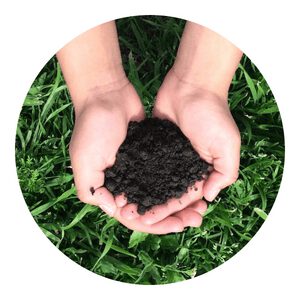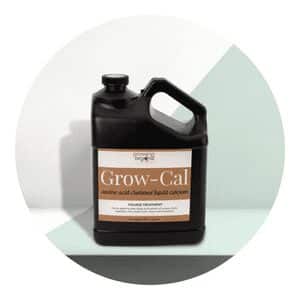How Often to Water Cucumbers?
Watering cucumbers is an important part of keeping them healthy.
Follow these guidelines to determine the right frequency:
2-3 times a week in the beginning, then every other day as they get bigger.

Watering cucumbers Menu
The importance of proper watering for cucumber plants
Properly watering cucumber plants is essential for a successful harvest.
Without the right amount of hydration, cucumber plants could suffer from wilting and disease, resulting in stunted growth or complete crop failure.
For those looking to successfully grow cucumbers, it is important to understand when and how often they need to be watered.
How often to water cucumbers will depend on several factors such as soil type, climate, and plant size.
In general, most healthy adult cucumber plants need 1-2 inches of water per week to thrive.
Watering should be done early in the morning before temperatures rise too high and should be applied directly at the base of the plant’s stem so that it can absorb as much moisture as possible.
Factors that affect cucumber watering needs
When it comes to growing cucumbers, one of the most important things to consider is how much and how often you should water them.
There are several factors that affect how often you need to water your cucumbers; from environmental conditions like temperature, light, soil type and moisture levels, to caring for the individual plants like watering frequency based on growth rate and size.
Climate and weather conditions
Climate and weather play a major role in how often you should water cucumbers.
In areas with hot, dry climates, cucumbers need more frequent watering than those in cooler, humid climates.
The temperature and humidity of the air will determine how quickly the soil around the plants dries out.
Planting your cucumbers in areas that receive morning sun and afternoon shade can help reduce evaporation from the leaves and soil.
During extreme heat waves, it’s important to check on your plants every day to make sure they’re getting enough water since their needs increase during these times.
In cold winter climates, freezing temperatures can affect when you should water your cucumber plants.
If temperatures are below 40 degrees Fahrenheit or 4 degrees Celsius for an extended period of time, it’s wise to wait until conditions warm up before watering them again as this type of cold can damage roots if they get too wet.
When spring arrives and temperatures begin to rise again after a prolonged freeze, watch closely for signs of wilting and adjust your watering accordingly to ensure that your cucumbers thrive all season long!
Soil type and quality
Soil type is an important factor when considering how often to water cucumbers.
Different soil types have varying levels of porosity and drainage, both of which affect how much water the cucumber plants need.
Sandy soils can drain quickly and require more frequent watering while clay soils hold onto moisture longer.
The quality of the soil also affects the frequency at which cucumbers need to be watered.
Soils that are nutrient-rich will help retain moisture better than those with a lower nutrient content, meaning less frequent watering may be necessary.
Adding organic matter such as compost or manure to the soil can also improve its quality and increase its water-holding capacity.
Furthermore, mulching around the base of the plants can reduce evaporation from the soil and help maintain adequate moisture levels for longer periods of time between irrigation cycles.
Cucumbers need water to grow tall and strong, Once a week should last them very long. Regularly check the topsoil for signs of dryness, Keeping cucumbers hydrated is a must with readiness. Too much water will keep their roots in stress, But with enough they’ll be as happy as can be nonetheless. Gently pour a few cups of water every now and then, So they’re enriched by moisture again and again.
Chappy The Gardener
Cucumber variety
Cucumbers come in a variety of shapes and sizes, with each type having slightly different water needs.
Determining how often to water cucumbers depends on the variety you are growing, as well as environmental factors such as temperature and humidity.
Slicing cucumbers have a more delicate skin that prefers more frequent watering than other varieties.
They should be watered every 1-2 days during hot weather, while during cooler temperatures once or twice per week is usually sufficient.
The soil should be kept moist but not soggy; if it begins to dry out too quickly, consider adding some mulch around the base of the plant to help retain moisture levels.
Vining cucumber plants require more water than their slicing counterparts due to their extended root systems and larger foliage surface area.
During hot weather they should be watered every 2-3 days; this will help them produce more fruits faster.
When temperatures drop, reduce watering down to once every 5-7 days; make sure soil is still damp before watering again.
Too much overwatering can lead to fungal diseases and damaged roots.
Stage of growth
The stage of growth of a cucumber plant can vary the amount of water it needs.
During its germination period, when it’s just beginning to grow, the soil should be kept moist but not soggy.
As the seedling grows, it will need more water and potentially more frequent watering.
Once mature, cucumbers typically require less frequent watering than when they were seedlings.
This is because their roots have become better able to reach further down in search of moisture that isn’t readily available on the surface.
During this later stage, a cucumber plant should generally be watered once a week or so depending on how hot and dry it is in your area; if temperatures are extremely high or your soil is very sandy then you may want to water twice per week instead.
Lastly, during times of drought or heavy heat and no rain for an extended period, cucumber plants may need extra watering to keep them healthy.
Signs of over-watering and under-watering cucumbers
Cucumbers are a popular vegetable to grow in gardens and they require consistent watering to thrive.
However, it’s easy to over-water or under-water cucumbers, which can lead to poor growth, disease, or even death.
Here are some signs to look for to determine whether your cucumbers are being over-watered or under-watered.
Signs of over-watering cucumbers:
- Yellowing leaves: If the leaves of your cucumber plant turn yellow and feel soft to the touch, it could be a sign of over-watering. When the soil is too wet, the roots can’t get enough oxygen, causing the leaves to yellow and wilt.
- Waterlogged soil: Over-watering can cause the soil to become waterlogged, meaning it’s so saturated with water that it can’t absorb any more. If the soil is constantly damp or soggy, it’s a sign that you may be over-watering your cucumbers.
- Fungus or mold growth: Over-watering creates a humid and moist environment, which can encourage the growth of fungus or mold on the leaves or stem of your cucumber plant.
Signs of under-watering cucumbers:
- Wilting leaves: If the leaves of your cucumber plant are wilting and drooping, it’s a sign that they’re not getting enough water. When cucumbers don’t get enough water, they can’t stay hydrated, causing the leaves to wilt.
- Dry soil: If the soil around your cucumber plants is dry, it’s a sign that they’re not getting enough water. When the soil is too dry, the roots can’t absorb the water they need to stay hydrated, causing the plants to wilt.
- Stunted growth: If your cucumber plants are growing slowly or are smaller than they should be, it could be a sign of under-watering. When cucumbers don’t get enough water, they can’t absorb the nutrients they need to grow, leading to stunted growth.
To prevent over-watering or under-watering your cucumbers, it’s important to monitor the soil moisture and water your plants only when they need it.
You can use a soil moisture meter to check the moisture level of the soil and water your plants when the soil is dry to the touch, but not completely dry.
This will ensure that your cucumbers get the right amount of water they need to grow healthy and strong.
How often to water cucumbers
The frequency of watering cucumbers depends on a variety of factors such as soil type, weather conditions, and the stage of growth of the plant.
As a general rule, cucumbers require consistent moisture to thrive and produce healthy fruits, but they also don’t like to be waterlogged.
Overwatering can lead to root rot, which can be detrimental to the plant’s health.
In the early stages of growth, cucumbers need to be watered more frequently to help establish their root system.
Typically, this means watering them every two to three days. As the plants mature, they can be watered less frequently, but still require consistent moisture.
One way to determine when to water cucumbers is to check the soil moisture level. Stick your finger into the soil up to the first knuckle. If the soil feels dry at this depth, it’s time to water. If the soil is still moist, wait a day or two before checking again.
During hot and dry weather, cucumbers may require more frequent watering. In this case, it’s important to water deeply to ensure the water reaches the roots. Shallow watering can cause the roots to grow near the surface, making the plant more susceptible to drought.
It’s also important to note that the frequency of watering may vary depending on the type of watering technique you are using.
Drip irrigation and soaker hoses, for example, deliver water directly to the roots, allowing for less frequent watering. On the other hand, sprinklers require more frequent watering to ensure the water reaches the roots.
In summary, the frequency of watering cucumbers depends on a variety of factors, but a good rule of thumb is to water them every two to three days in the early stages of growth and adjust as needed based on soil moisture and weather conditions.
Water deeply and infrequently, and be sure to avoid overwatering.
Techniques for watering cucumbers
Watering cucumbers is an important part of their care as they require consistent moisture to thrive and produce healthy fruits.
There are several techniques that can be used for watering cucumbers, each with its own advantages and disadvantages.
Here are some common techniques for watering cucumbers:
Drip irrigation: This is a very effective technique for watering cucumbers as it delivers water directly to the roots where it is needed most.
Drip irrigation also helps to conserve water as it reduces evaporation and runoff.
Drip irrigation systems can be set up to run automatically, which saves time and effort.
However, they can be expensive to install and maintain.
Soaker hoses: Soaker hoses are similar to drip irrigation in that they deliver water directly to the roots.
However, soaker hoses are made of porous materials that allow water to seep out along the entire length of the hose.
Soaker hoses are less expensive than drip irrigation systems and can be easily moved around the garden.
They are also more durable than drip irrigation systems.
However, they are less precise in their water delivery and can be prone to clogging.
Hand watering: This is the most traditional and simplest method of watering cucumbers.
It involves using a watering can or hose to manually water the plants. Hand watering allows for precise control over the amount of water delivered to each plant and can be a good way to spot-check the soil moisture level.
However, hand watering can be time-consuming and labor-intensive, especially if you have a large garden.
Sprinklers: Sprinklers are a common method of watering cucumbers as they cover a wide area and can be easily adjusted to deliver water to different parts of the garden.
They are also less expensive than drip irrigation and soaker hoses.
However, sprinklers can be wasteful as they can lose a lot of water to evaporation and runoff.
They can also promote the spread of diseases by wetting the leaves of the plants.
When it comes to watering cucumbers, the most important thing is to ensure that the soil is consistently moist but not waterlogged.
This can be achieved by watering deeply and infrequently, rather than shallowly and frequently.
Aim to water cucumbers at the base of the plant, rather than on the leaves, to reduce the risk of disease. And be sure to water early in the morning or in the evening when temperatures are cooler to reduce evaporation.
Watering methods for different environments
When it comes to watering cucumbers, the environment plays a major role in determining how often one should water.
For dry or arid climates, cucumbers thrive with daily watering to prevent stress from lack of moisture.
In these environments, water should be applied until the soil is wet to a depth of at least 8-10 inches.
Additionally, mulching around the plant can help conserve moisture and reduce evaporation from the soil surface.
In humid climates with plenty of rainfall, however, cucumbers need less frequent watering; instead of every day it’s best to water only when the top few inches of soil are dry. This helps prevent root rot and other diseases caused by overly wet conditions.
To determine when exactly to water, insert your finger into the soil up to your first knuckle; if it is damp then there is still enough moisture and you don’t need to provide additional water yet.
If it feels dry then go ahead and give them some more H2O!
In conclusion, watering cucumbers is essential to a successful harvest.
The frequency of watering depends on several factors, such as the type of soil, the temperature and humidity level, and the amount of sunlight that the plants receive.
Too much water can result in nutrient deficiencies for cucumbers, while too little water can cause stunted growth and wilting.
Home gardeners should check their cucumber plants frequently and adjust their watering schedules accordingly.
Click To Grow
Helps Us Grow – Share If You Like















